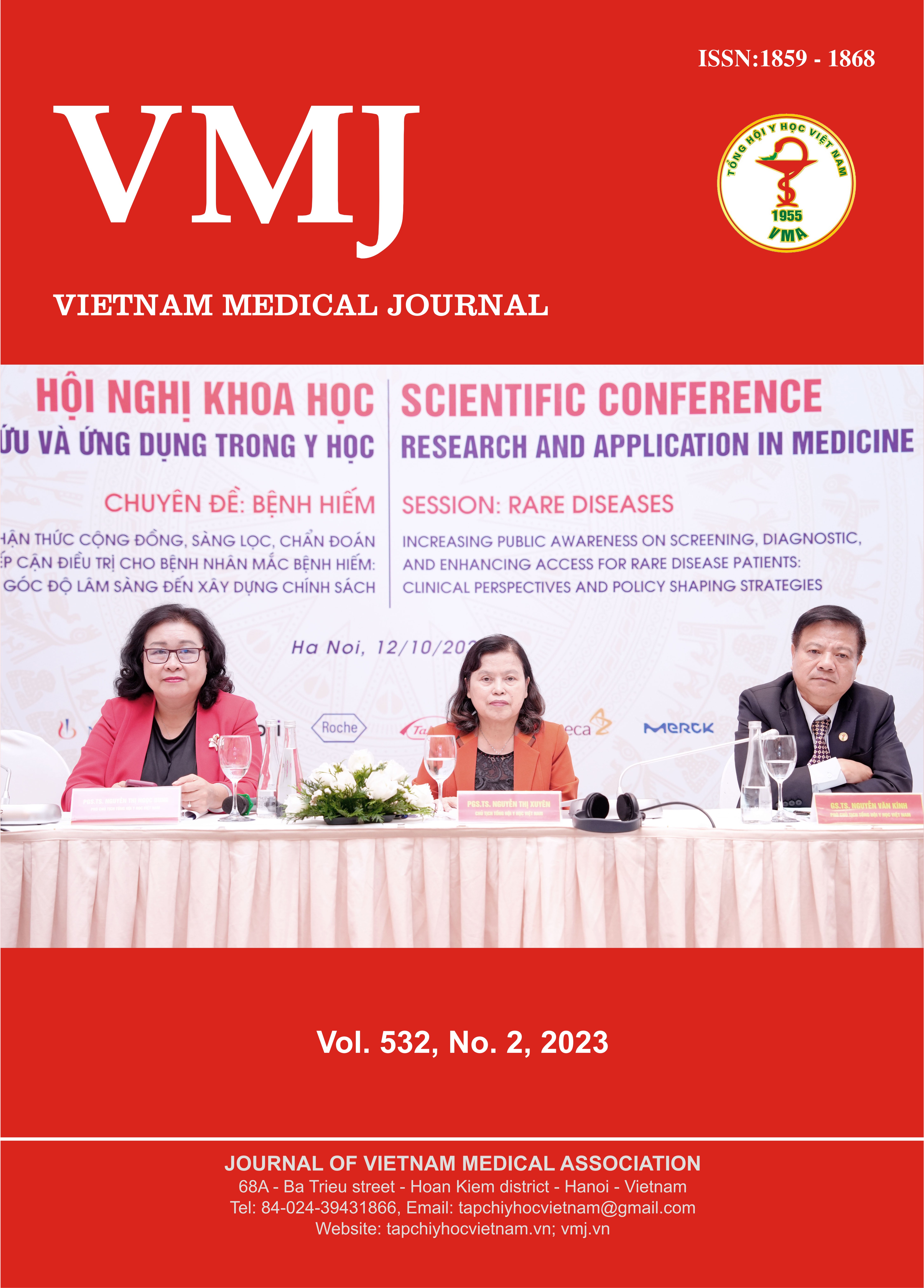CLINICAL FEATURES OF MAJOR SCALP DEFECTS AT MILITARY CENTRAL HOSPITAL 108
Main Article Content
Abstract
Objectives: describe the clinical features of major scalp defects requiring surgery. Materials and methods: The above cross-sectional descriptive study included 16 patients with major scalp defects who received surgery at Center of Craniofacial and Plastic Surgery, Military Central Hospital 108 from September 2016 to April 2021. Participants were taken medical history, received clinical examination, and measured their defect sizes to record research indices. Results: Participants had an average age of 61 years old, male/female ratio = 1/1; 81.25% of them had comorbid chronic systemic diseases. The most common cause of the defects was scalp cancer, which accounted for 75%. The defects had an average area of 84.4cm2 and mainly located in the occipital region which occurred in 87.5% of patients, alone or combined with other regions, 100% of patients had to been removed the periosteum. Conclusions: Major scalp defects were mainly seen in elderly people with an average age of 61 years old, the ratio of male to female was equal. Chronic diseases accounted for 81.25%, the main cause was scalp cancer and accounted for 75%, common clinical symptoms were vegetations, ulcers, periosteal loss and defects mainly occurred in compression regions.
Article Details
Keywords
Major scalp defects, scalp cancer
References
2. Zayakova, Yolanda, et al. “Application of local axial flaps to scalp reconstruction.” Archives of plastic surgery 40.5 (2013): 564.
3. Shonka Jr, D. C., Potash, A. E., Jameson, M. J., & Funk, G. F. (2011). Successful reconstruction of scalp and skull defects: lessons learned from a large series. The Laryngoscope, 121(11), 2305-2312.
4. Mueller, C. K., Bader, R. D., Ewald, C., Kalff, R., & Schultze-Mosgau, S. (2012). Scalp defect repair: a comparative analysis of different surgical techniques. Annals of plastic surgery, 68(6), 594-598
5. Lutz, B. S., Wei, F. C., Chen, H. C., Lin, C. H., & Wei, C. Y. (1998). Reconstruction of scalp defects with free flaps in 30 cases. British journal of plastic surgery, 51(3), 186-190
6. Le Van Quang, “ Ung thư đầu cổ” Hanoi Medical University (2020)
7. Nguyen Van Thuong, “Hình ảnh lâm sàng, chẩn đoán và điều trị trong chuyên ngành da liễu tập 2” National Hospital of Dermatology and Venereology 2019
8. Tran Thiet Son, et al. “Nhận xét kết quả tạo hình các khuyết lớn da đầu”, Vietnam Medical Journal, pages 1859-1868, 2007
9. Souza, C. D. (2012). Reconstruction of large scalp and forehead defects following tumor resection: personal strategy and experience-analysis of 25 cases. Revista Brasileira de Cirurgia Plástica, 27, 227-237
10. Nguyen Tran Thanh (2019), “Đánh giá kết quả tạo hình khuyết lớn da đầu bằng vạt da cân động mạch thái dương nông” Hanoi Medical University 2020


